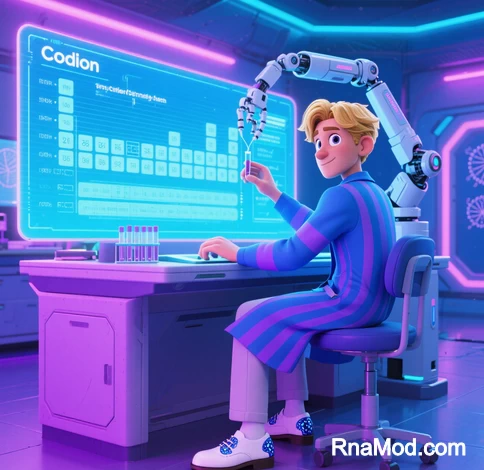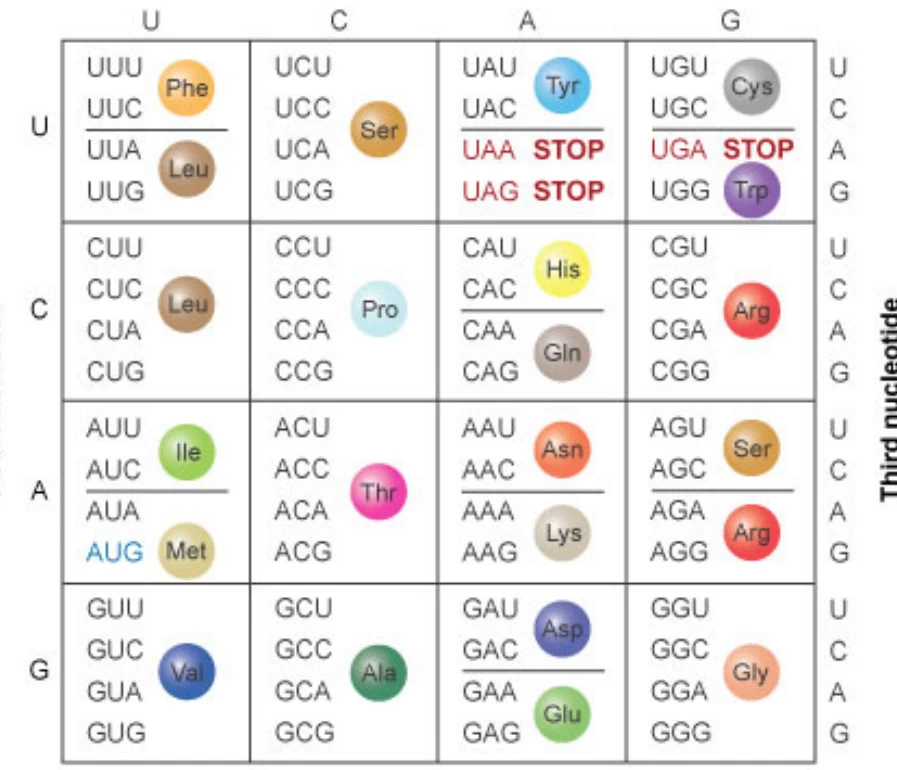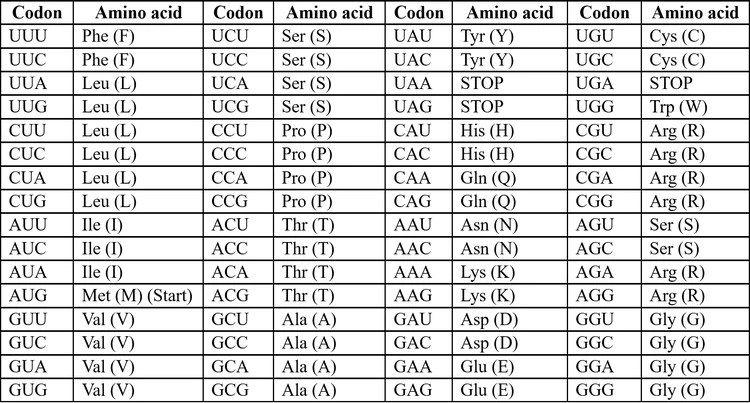 The genetic code—a universal language written in DNA and RNA nucleotides—governs protein synthesis in all living organisms. A codon chart serves as the essential decoder for this language, mapping triplets of nucleotides (codons) to specific amino acids. This systematic correspondence enables cells to construct proteins with precision, forming the molecular machinery of life.
The genetic code—a universal language written in DNA and RNA nucleotides—governs protein synthesis in all living organisms. A codon chart serves as the essential decoder for this language, mapping triplets of nucleotides (codons) to specific amino acids. This systematic correspondence enables cells to construct proteins with precision, forming the molecular machinery of life.
I. The Genetic Code: Nucleotides to Amino Acids
A codon consists of three consecutive nucleotides in messenger RNA (mRNA), transcribed from DNA templates. The four RNA bases—Adenine (A), Uracil (U), Cytosine (C), Guanine (G)—generate 64 possible codon combinations (4³):
- 61 codons encode the 20 standard amino acids.
- 3 stop codons (UAA, UAG, UGA) terminate protein synthesis.
- Start codon AUG signals initiation and encodes Methionine.
The genetic code exhibits degeneracy: multiple codons specify the same amino acid. For example:
- Proline: CCU, CCC, CCA, CCG
- Leucine: CUU, CUC, CUA, CUG, UUA, UUG

This redundancy buffers against mutations, ensuring functional proteins despite minor genetic changes.
II. Using Codon Charts: Step-by-Step Translation
Codon charts exist in two primary formats:
A. Tabular (Grid) Format

Figure: Tabular codon chart (Abcam). The first nucleotide (Y-axis), second (X-axis), and third (cell interior) define each codon.
- Locate the first base in the leftmost column.
- Find the second base in the top row.
- Intersect row and column; the third base identifies the amino acid within the cell.
Example: UAC → Tyrosine (First: U, Second: A, Third: C).
B. Circular (Wheel) Format
Figure: Circular codon chart. Innermost ring: first base; middle ring: second base; outer ring: third base.
- Start at the chart’s center with the first nucleotide.
- Move outward to the second nucleotide.
- Proceed to the third nucleotide to read the amino acid.
Example: CGU → Arginine (First: C, Second: G, Third: U).
III. Biological Significance and Applications
A. Molecular Biology & Evolution
- Conservation: The code is nearly universal across species, indicating a shared evolutionary origin. Mitochondrial variants exist but are rare.
- Error Mitigation: Degeneracy minimizes damage from point mutations. Codons for the same amino acid often share the first two bases (e.g., Valine: GUU, GUC, GUA, GUG).
B. Medical and Biotechnological Innovations
- Recombinant Protein Production: Codon optimization (e.g., insulin synthesis) enhances protein expression in host cells like bacteria.
- mRNA Vaccines: COVID-19 vaccines use codon-optimized sequences to maximize spike protein expression in human cells.
- Gene Therapy: Correcting disease-causing mutations requires precise codon mapping to restore functional proteins.
IV. Scientific Foundations: Central Dogma and Code Decipherment
The Central Dogma of Molecular Biology (Crick, 1957) underpins codon function:
DNA → Transcription → RNA → Translation → Protein
Genetic information flows unidirectionally, with transcription converting DNA to mRNA, and translation using codons to build polypeptides.
Key Historical Milestones:
- 1961: Nirenberg and Matthaei deciphered the first codon (UUU → Phenylalanine) using synthetic poly-U RNA in cell-free systems.
- 1968: Nirenberg, Khorana, and Holley received the Nobel Prize for fully elucidating the genetic code.
Data sourced from public scientific references.
For collaboration or domain inquiries, contact: chuanchuan810@gmail.com.
